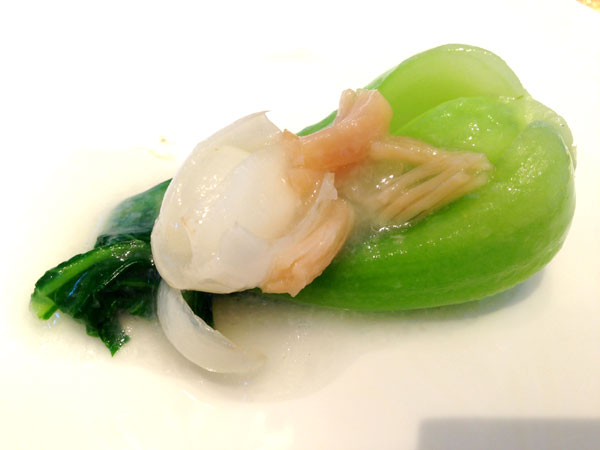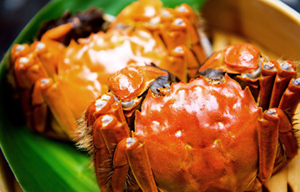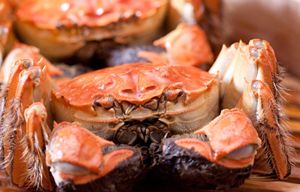Pure Mongolian pleasures
 |
|
Mitang cabbage [Photo by Pauline D. Loh / China Daily] |
"He made that himself, and the handle is a very carefully chosen lamb shank bone," says Leslie Wang, general manager of the Shangri-la Manzhouli and my host at the hotel's Shang Palace. He had seen the covetous gleam in my eyes.
Not long after, a young assistant trotted in and retrieved the knife. Obviously, the Mongolian chef, too, knew it might be too much temptation lying about.
Apart from lamb, Mongolians on the great grassland of Hulunbeir on which Manzhouli sits also enjoy the harvest from the lake from which the prairie gets its name.
Tiny pale prawns, called white prawns, are quickly and simply flash-fried so diners can savor their addictive sweetness. And yes, it is hard to stop reaching for the tiny crustaceans because the shells are so soft they are almost non-existent and the flesh is firm and sugar sweet.
There are also small mullet-like fish so sensitive to pollution that they die almost as soon as they leave the water. Here, they are bought fresh every morning, and prepared at once because they will not keep. Again, like the prawns, their flesh is firm and sweet.
I had specifically asked for vegetables, and the first dish out was a soupy bowl of wild greens harvested from the grasslands.
"This is a herb that grows on the grasslands, and only the tender shoots are plucked and eaten. It's called liuhaoya," executive chef Gordon Sun explains. The dark-green shoots are slightly bitter with a nutty aftertaste, reminiscent of wild rocket leaves or organic arugula.
The next vegetable on the table is a platter of Chinese greens and tender lily bulbs cooked in mitang, the starchy broth left over from boiling rice. It coats the vegetables with a surprisingly smooth glaze, and again shows off the Mongolian talent of using totally natural ingredients to achieve successful culinary marriages.
Sometimes, the simplest dishes are the hardest to do well, but the greens were crisp but cooked and the slightly blanched lily bulbs added a fresh, sweet mouth-feel that was lubricated by the starchy glaze.
Sweet. That was the recurring theme in this meal, only there was absolutely nothing artificial about it.
Strangely enough, the only thing on the table that should be sweet was actually savory. Mongolian milk tea, traditionally the only source of vitamins and minerals in the nomadic lifestyle of old, is made with salt, not sugar.
Black tea such as pu'er is cooked in water and then milk and salt are added to the pot. The tea is served for breakfast or at any meal, and comes with side garnishes of roasted cracked rice and savory crackers. There is often hard goat's cheese, chipped and added to the hot tea so it melts gradually.
In the end, there was one particular dish I enjoyed very much in Manzhouli that day. It was hot juicy meat patties made with onions, and beef, not lamb.





















